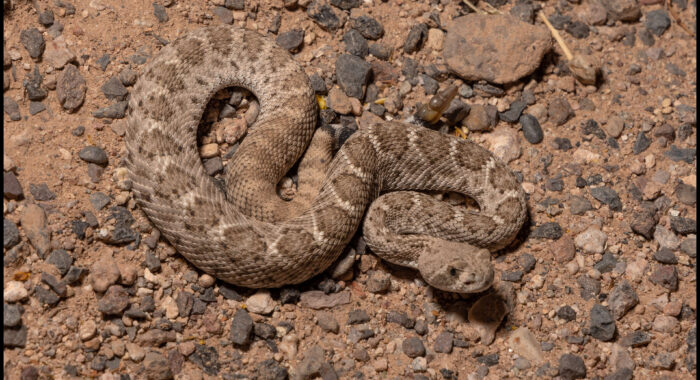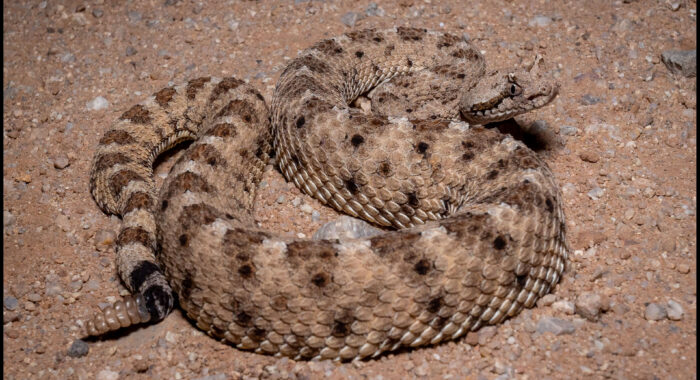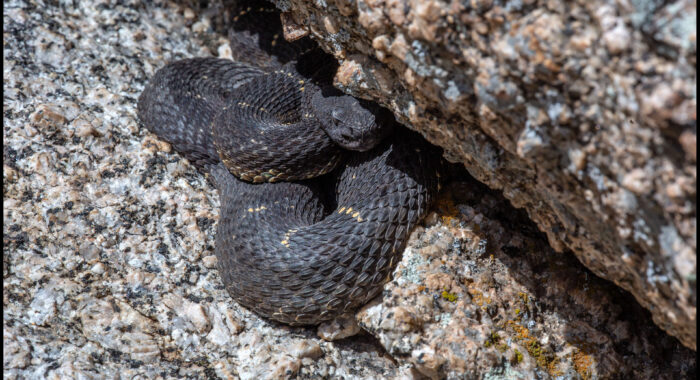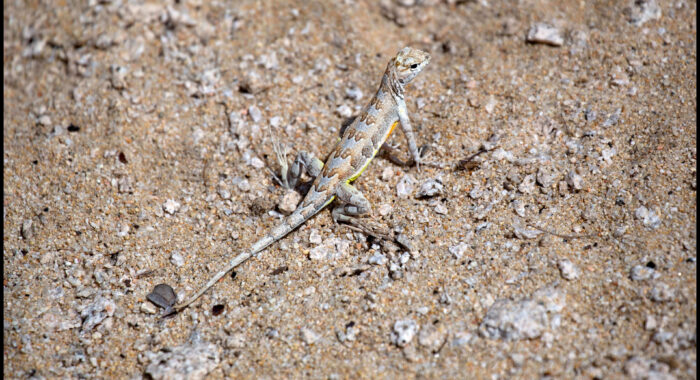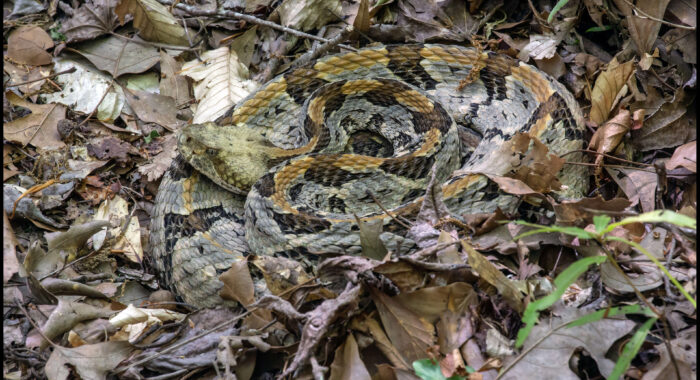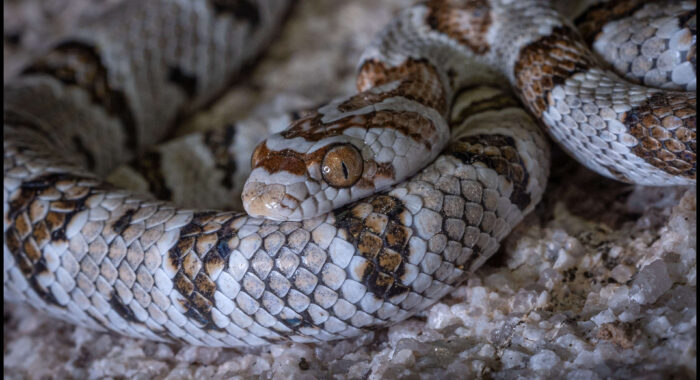Can you tell the age of a rattlesnake from counting the segments of its rattle? For the most part: no. But sometimes, it’s easy. This young Western Diamondback Rattlesnake was found late in the monsoon season. From its rattle, it can be seen it’s shed its skin exactly two times – once to reveal the […]
Continue reading..Baby Western Diamondback Rattlesnake Shows Its AgeSonoran Sidewinders can be incredibly common in the right habitat, but that doesn’t often put them in the path of homeowners in the Phoenix and Tucson areas. Of the six species of rattlesnakes that can be found at the native habitat contact zones, this species is the first to disappear whenever roads come in. They […]
Continue reading..Sonoran Sidewinder Near PhoenixA pair of Arizona Black Rattlesnakes take the prime spot at the den, with a half dozen or more shuffling throughout the day behind them. For these snakes, it’s early den egress time, when they stage at and near the den for awhile before heading out for the season. This den is shared by two […]
Continue reading..Arizona Black Rattlesnakes At A Multi-Species DenOne of the many Zebra-tailed lizards running around a popular beach in Cabo San Lucas, Mexico. Unlike about every other situation where we were wading through beach dune sands looking for lizards and snakes, this spot had a guy with a cooler selling ice-cold cervesas. This needs to be normalized in herpetology.
Continue reading..Zebra-tailed Lizard On The BeachA large canebrake rattlesnake (timber rattlesnake) from forests of the southeast. This would not be a fun environment to live in if you were a squirrel.
Continue reading..Canebrake Rattlesnake In The LeavesA thin Western Diamondback Rattlesnake stopped for a moment while crossing a dirt road. Often, this behavior is misinterpreted as “sunning”. While snakes may stop to bask like this, in many cases, it’s just that the snake saw the observer first and stopped moving in hopes the perceived predator will not notice it. They don’t […]
Continue reading..Western Diamondback Rattlesnake Crossing The RoadSouthwestern Speckled Rattlesnake on the move late at night in Phoenix. These snakes are the most commonly encountered snake on many trails in the area. For the reasons you can see here, and others, these snakes are quite often misidentified as Tiger Rattlesnakes when people see them. At popular trails like Piestewa (not where this […]
Continue reading..Southwestern Speckled Rattlesnake in Orange FormSonoran Lyresnake from the southwestern corner of Arizona. These snakes are common in the right habitat, but most lifelong Arizona residents will never see one. The large eyes indicate one of the reasons: they’re primarily nocturnal, often moving late at night long after temperatures have cooled enough to have stopped most other snake activity.
Continue reading..Sonoran Lyresnake From Yuma CountyAn Arizona Black Rattlesnake from the far-eastern end of their range. This species’ appearance can vary from entirely black to light shades of grey and purple and change color from day to day. Many grow into adults that aren’t black at all. From some areas, they may look strange. But, this may be only bias […]
Continue reading..Arizona Black Rattlesnake From Greenlee CountyTranslucent cave millipedes were everywhere as we descended deep into a Slovenian cave, searching for an Olm.
Continue reading..Slovenian Cave Millipedes
